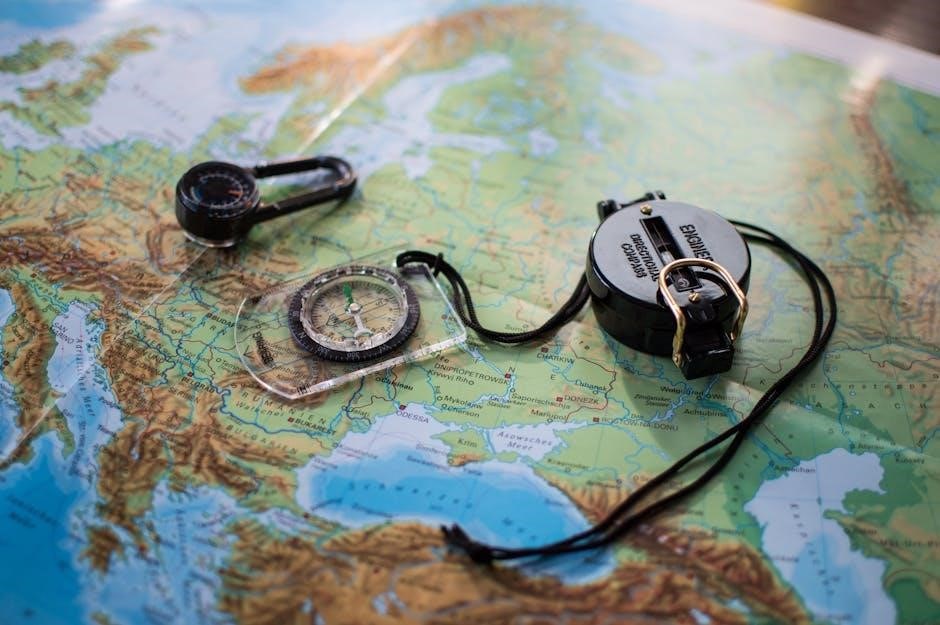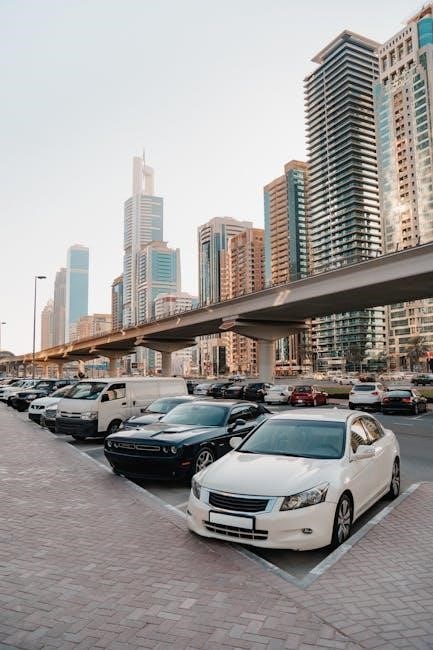Welcome to the Assassin’s Creed II Trophy Guide! This guide provides detailed tips and strategies to unlock all 51 trophies, including the Platinum, efficiently. Discover how to master the game and achieve 100% completion with ease.
Overview of the Game and Trophy System
Assassin’s Creed II features a total of 51 trophies, including 1 Platinum, 1 Gold, 15 Silver, and 34 Bronze. The trophy system rewards players for completing story missions, side quests, and specific in-game challenges. Set in Renaissance Italy, the game follows Ezio Auditore as he seeks revenge, offering a rich narrative and diverse gameplay mechanics. Trophies are tied to achievements such as mastering combat, stealth, and exploration. The system encourages players to explore all aspects of the game, from collectibles like feathers to advanced combat techniques. This guide provides a comprehensive breakdown of each trophy type, helping players understand the requirements and strategies needed to unlock them.
Importance of Trophies in Assassin’s Creed 2
Trophies in Assassin’s Creed II serve as a rewarding way to track progress and showcase achievements. They add an extra layer of challenge and encourage players to explore all aspects of the game, from combat mastery to stealth perfection. Earning trophies provides a sense of accomplishment and recognizes skillful gameplay. They also enhance replayability, as players strive to unlock every achievement. Trophies are categorized into Bronze, Silver, Gold, and Platinum, each requiring specific tasks. This system motivates players to fully immerse themselves in the game, completing story missions, side quests, and optional objectives. Unlocking trophies is a key part of the gaming experience and adds depth to the adventure.

Platinum Trophy
The Platinum Trophy is unlocked by earning all other trophies in Assassin’s Creed II. It requires completing the game to 100%, including story missions, side quests, and collectibles, within 20-30 hours.
Requirements for Unlocking the Platinum Trophy
To unlock the Platinum Trophy in Assassin’s Creed II, you must earn all 51 trophies, including 1 Platinum, 1 Gold, 15 Silver, and 34 Bronze trophies. This requires completing the game’s story missions, side quests, and collectible challenges. You must also master combat and stealth techniques, and complete additional challenges like time trials and precision jumps. The Platinum Trophy is the ultimate achievement, confirming 100% completion of the game. Estimated time to unlock is between 20 and 30 hours, depending on skill level and familiarity with the game mechanics. Every trophy must be unlocked to claim this prestigious award.
Estimated Time to Achieve 100% Completion
Achieving 100% completion in Assassin’s Creed II requires approximately 20 to 30 hours of gameplay, depending on your skill level and familiarity with the game. This includes completing all story missions, side quests, and collectible challenges. Mastery of combat and stealth techniques will significantly reduce completion time. Players new to the series or less experienced may need closer to 30 hours to unlock all trophies. Efficient playthroughs and strategic planning can help minimize time spent on repetitive tasks. With dedication and focus, earning 100% completion is achievable and rewarding, unlocking the prestigious Platinum Trophy;
Gold Trophies
The game features 1 Gold Trophy, titled “The Birth of an Assassin,” awarded for obtaining the Poison Blade and performing an air assassination, marking a pivotal skill milestone.
Details of the Gold Trophy and Its Requirements
The Gold Trophy, titled “The Birth of an Assassin,” is unlocked by obtaining the Poison Blade and performing an air assassination. This achievement marks a pivotal moment in the game, as it introduces a key weapon and skill. The Poison Blade is acquired during DNA Sequence 5, Memory 2, titled “A Blade With Bite.” By this point, players have already learned how to execute air assassinations, making this trophy a natural progression. The trophy is straightforward and requires minimal additional effort beyond completing the story mission. It represents a significant milestone in Ezio’s journey, highlighting his growth as an assassin.
Strategies for Earning the Gold Trophy
To earn the Gold Trophy, “The Birth of an Assassin,” focus on completing DNA Sequence 5, Memory 2, where you acquire the Poison Blade. Ensure you fully upgrade your equipment to enhance combat efficiency. Replay the memory if necessary to perfect your approach. Practice air assassinations beforehand to build proficiency. Use stealth to reach high vantage points, allowing for seamless air assassinations. Timing and positioning are crucial, so observe enemy patrols carefully. Once the Poison Blade is equipped, execute the assassination swiftly and accurately. This trophy is a pivotal achievement, showcasing your mastery of Ezio’s abilities and progression as an assassin.
Silver Trophies
Silver trophies in Assassin’s Creed 2 require skill and dedication, focusing on specific achievements like completing challenging memory sequences, mastering combat techniques, or excelling in optional side quests, showcasing a well-rounded gameplay experience.
Overview of Silver Trophies and Their Objectives
Silver trophies in Assassin’s Creed 2 are mid-tier achievements that recognize specific accomplishments, such as completing challenging memory sequences, mastering combat skills, or excelling in optional side quests. These trophies often require a combination of skill, strategy, and dedication, serving as milestones for players aiming to fully experience the game. They are less demanding than Gold trophies but more complex than Bronze ones, focusing on particular aspects of gameplay like stealth, parkour, or weapon proficiency. Earning Silver trophies contributes significantly to overall progression and is a key step toward unlocking the Platinum trophy, making them essential for players seeking 100% completion.
Effective Methods for Unlocking Silver Trophies
To efficiently unlock Silver trophies in Assassin’s Creed 2, focus on mastering specific gameplay mechanics and completing challenging objectives. Perfecting combat techniques, such as countering and disarmings, is crucial for trophies tied to combat efficiency. For stealth-related Silver trophies, practice blending into crowds and avoiding detection to meet the criteria. Completing side quests and optional objectives, like rescuing citizens or solving puzzles, is also essential. Replay memory sequences to achieve missed objectives and explore thoroughly to uncover hidden challenges. Utilizing upgrades, such as better weapons or armor, can simplify difficult tasks. Consistency and patience are key, as these trophies often require multiple attempts to unlock.

Bronze Trophies
Bronze trophies in Assassin’s Creed 2 reward players for completing specific in-game tasks, such as assassinations, parkour moves, and tool usage, enhancing overall gameplay experience.
Breakdown of Bronze Trophy Requirements
Bronze trophies in Assassin’s Creed 2 are earned by completing specific tasks tied to gameplay mechanics. These include performing a set number of assassinations, mastering parkour moves, or using certain tools like the grappling hook. Some trophies focus on combat, such as defeating enemies without losing health, while others reward stealth-based gameplay, like evading guards undetected. Certain trophies are linked to story progression, requiring players to complete specific missions or achievements, such as rescuing citizens or solving puzzles. Each bronze trophy has unique objectives, ensuring a diverse range of challenges that cater to different playstyles and skill levels.
Tips for Completing Bronze Trophy Challenges
To efficiently unlock bronze trophies in Assassin’s Creed 2, focus on mastering specific in-game mechanics and exploring thoroughly. For combat-related trophies, practice countering and disarming foes to minimize damage. For stealth challenges, use rooftops and shadows to evade detection. When pursuing collectible-based trophies, explore every nook of Florence and Venice, utilizing the map to pinpoint hidden items. Additionally, complete side missions to unlock tools like the grappling hook, which simplifies traversal and certain trophy requirements. By methodically tackling each objective and leveraging in-game guides, you can achieve 100% completion without missing any bronze trophy opportunities.

Story-Related Trophies
Story-related trophies in Assassin’s Creed 2 are awarded for completing specific DNA sequences and key missions that progress the game’s narrative, such as reaching certain plot milestones.
Trophies Linked to Completing DNA Sequences
Several trophies in Assassin’s Creed 2 are tied to completing specific DNA sequences, which represent key story milestones. These include “The Birth of a New Era” for completing Sequence 1 and “Arrivederci” for finishing Sequence 14. Each sequence trophy marks a significant progression in Ezio’s journey, often requiring players to complete all memories within that sequence. Additionally, some trophies are awarded for specific in-sequence actions, such as “The Prince” for completing Sequence 8. Progressing through the story naturally will unlock these trophies, but players must ensure they complete all required objectives without skipping memories or deviating from the narrative path.
Key Missions and Their Corresponding Trophies
Several key missions in Assassin’s Creed 2 are directly tied to trophy unlocks, rewarding players for completing pivotal story moments. For example, “The Duomo” mission unlocks the trophy “The Birth of a New Era,” marking the beginning of Ezio’s journey. Another notable mission is “The Truth,” which awards the trophy “The Prince” upon completion. These missions are crucial for progressing through the narrative and unlocking related achievements. Players must complete all objectives within these missions to earn their respective trophies, ensuring they follow the story path without deviation. Mastering parkour and stealth skills will aid in completing these missions efficiently and unlocking their associated trophies.
Side Mission Trophies
Side mission trophies reward players for completing optional quests and objectives outside the main storyline, such as helping citizens or achieving specific in-game feats. These trophies add variety and depth to the gameplay experience, encouraging exploration and skill mastery. Earning them contributes to overall completion and showcases a player’s dedication to fully immersing themselves in the game’s world and challenges.
Unlocking Trophies Through Side Quests
Side quests in Assassin’s Creed 2 offer diverse opportunities to earn trophies. Completing tasks like helping citizens, racing, or fulfilling specific assassination contracts rewards players with unique trophies. These quests not only provide gameplay variety but also contribute to 100% completion. Some trophies are tied to optional objectives within these quests, requiring precise actions or outcomes. For example, completing a race without hitting obstacles or rescuing a certain number of citizens can unlock specific trophies. Players should focus on completing side quests early and strategically to avoid missing out on these achievements. This approach ensures progress toward the platinum trophy and enhances the overall gaming experience.
Completion of Optional Objectives for Trophies
Optional objectives in Assassin’s Creed 2 are crucial for unlocking specific trophies. These challenges, found within missions, require players to meet additional criteria, such as completing tasks stealthily or avoiding detection. For example, some trophies demand assassinating targets without being seen or finishing missions within strict time limits. Others may involve specific actions, like throwing enemies into water or using certain weapons. Completing these objectives adds variety to gameplay and rewards players with unique achievements. Focusing on optional goals early in a playthrough ensures a smoother path to 100% completion and maximizes trophy acquisition without needing multiple replays.

Collectible Trophies
Collectible trophies in Assassin’s Creed 2 involve finding 100 hidden feathers and other items across Venice and the Tuscan countryside, enhancing gameplay and completion.
Finding Hidden Items for Trophy Unlocking
Finding hidden items, like the 100 feathers scattered across Italy, is crucial for unlocking trophies. Use Eagle Vision to spot these collectibles, often hidden on rooftops, in wells, or tucked away in corners. Thoroughly explore Florence, Venice, and the Tuscan countryside, as feathers are easy to miss. Consider using a map to track progress and ensure no areas are left unsearched. Some items may require precise jumps or specific tools to reach, so patience and persistence are key. Dedicate time to this task, as it significantly contributes to 100% completion and earns you the “Treasure Hunter” trophy.
Guidance on Locating Feathers and Other Collectibles
Locating feathers and other collectibles in Assassin’s Creed 2 requires a meticulous approach. Start by thoroughly exploring each region, as feathers are often hidden in hard-to-reach spots like rooftops, wells, and gardens. Use Eagle Vision to highlight collectibles, making them easier to spot. For feathers, focus on Florence, Venice, and the Tuscan countryside. Other collectibles, such as codex pages and glyphs, are tied to specific locations like churches or landmarks. Keep a checklist to track progress and revisit areas as needed. Patience is key, as these items are often cleverly concealed. Dedication will reward you with 100% completion and the satisfaction of unlocking all hidden treasures.

Combat and Stealth Trophies
Combat and stealth trophies in Assassin’s Creed 2 reward mastery of fighting and sneaking skills, emphasizing strategy over brute force. Precision and patience are essential for success.
Trophies Based on Combat and Stealth Skills
In Assassin’s Creed 2, trophies tied to combat and stealth require players to master both aggressive and subtle approaches. Trophies like “No-Hitter” demand completing a memory without taking damage, while “Man of the People” rewards blending into crowds undetected. Others, such as “Stalk and Slash,” focus on silent takedowns. These trophies test players’ ability to balance strategy and reflexes, encouraging the use of weapons like the dagger and the environment for cover. Earning these trophies enhances gameplay by refining combat and stealth techniques, making players more versatile and efficient in achieving 100% completion.
Mastering Techniques for Combat-Related Trophies
To excel in combat-related trophies, focus on refining your skills in both melee and stealth. Mastering the art of counterattacks is crucial, as they allow you to disarm and defeat enemies efficiently. Use the environment to your advantage by pushing foes into water or off rooftops. Employing weapons like the dagger for quick kills and the sword for prolonged fights will help you unlock trophies like “Street Cleaner.” Practice timing jumps and dodges to avoid damage, which is essential for trophies requiring no harm taken. Balancing aggression with strategy ensures you conquer combat challenges seamlessly and earn the desired trophies without unnecessary difficulty.

Additional Challenges
Explore time trials and precision jumps to test your skills. These challenges enhance replayability and offer unique trophy opportunities, refining your agility and timing abilities effectively.
Time Trials and Precision Jumps
Mastering time trials and precision jumps is essential for unlocking specific trophies. These challenges require flawless parkour execution and optimal route planning. For time trials, focus on sprinting and minimizing detours, as every second counts. Use the mini-map to anticipate turns and plan your path efficiently. Precision jumps demand accuracy; reduce speed before leaping to maintain control. Timing your jumps perfectly is critical—hit the button just before the edge to avoid overshooting. Patience and practice are key, as these challenges can be unforgiving. Memorize the best routes and timing to achieve success. These trials test your mastery of Ezio’s agility and reflexes, pushing your skills to the limit.
Special Challenges for Extra Trophies
Assassin’s Creed 2 features unique challenges that offer extra trophies, adding depth to the game. One such challenge is the “Perfect Harmony” achievement, where Ezio must blend into a group seamlessly without detection. Another involves using the poison blade effectively to incapacitate targets quietly. Additionally, completing specific optional objectives, like finishing a mission without killing anyone, rewards players with exclusive trophies. These challenges test various skills, from stealth and strategy to precision and creativity. They provide a fresh layer of gameplay beyond the main story, making the journey to 100% completion more engaging and rewarding for dedicated players.

Weapon and Tool Trophies
Earn trophies by mastering weapons like the poison blade and upgrading tools. Utilize stealth gadgets and lethal arms to unlock achievements tied to strategic combat and efficiency.
Using the Poison Blade for Trophy Unlocking
The Poison Blade is a versatile weapon in Assassin’s Creed 2, enabling stealthy and lethal takedowns. To unlock the “Poisonous” trophy, use the blade to poison 10 enemies without killing them directly. Equip it by pressing the weapon wheel and selecting it during missions or free roam. For best results, use it on guards or targets in crowded areas to avoid immediate detection. Poisoned enemies will eventually die, contributing to the trophy’s requirements. Mastering the Poison Blade adds a strategic layer to gameplay and is essential for 100% completion. Ensure you reload or re-equip the blade if it runs out of charges.
Upgrading Weapons for Trophy Requirements
Upgrading weapons is crucial for achieving specific trophies in Assassin’s Creed 2. To unlock the “Show your Mettle” trophy, fully upgrade three weapons, such as the sword, dagger, or mace. Visit blacksmiths in Florence, Venice, or Rome to enhance your gear using florins. Upgrades improve weapon damage, throwing capabilities, and durability. For the “The Jackdaw” trophy, focus on the sword, as it requires the most upgrades. Completing weapon upgrades not only strengthens Ezio but also progresses toward 100% completion. Ensure you spend florins wisely and check the weapon stats menu regularly to track your progress. This step is essential for earning the “Arsenal” trophy.

Tips for 100% Completion
Complete all DNA sequences, side missions, and collectibles. Regularly save progress and utilize the in-game journal to track objectives. This ensures a smooth path to 100% completion.
Optimizing Your Playthrough for Maximum Efficiency
To efficiently achieve 100% completion in Assassin’s Creed 2, focus on completing story missions first, as they unlock new areas and tools. Manage side quests and collectibles simultaneously to avoid repetitive travel. Use the in-game map to track feathers, codex pages, and other collectibles, and prioritize them during exploration. Employ stealth and blending techniques to avoid unnecessary combat, saving time and reducing notoriety. Regularly upgrade your weapons and tools at the blacksmith to enhance your capabilities. Utilize the Animus stats to monitor progress and identify missed objectives. By balancing story progression with optional content, you’ll streamline your journey to 100% completion.
Avoiding Common Mistakes in Trophy Hunting
When aiming for 100% completion in Assassin’s Creed 2, avoid common pitfalls that can hinder progress. Overlooking hidden items, such as feathers or codex pages, is a frequent mistake—always check your map for collectibles. Ignoring notoriety management can lead to constant guard chases, wasting time; use bribes or assassinations to lower it. Forgetting to save regularly can result in lost progress, especially during challenging missions. Neglecting to upgrade your gear at the blacksmith can make combat and stealth harder than necessary. Lastly, rushing through missions without exploring can cause missed objectives. Stay methodical, use your tools wisely, and double-check requirements to avoid unnecessary replays;

Final Thoughts on Trophy Guide
Congratulations on completing the Assassin’s Creed 2 trophy guide! Earning 100% requires dedication and skill. Your patience and persistence have paid off—enjoy your Platinum trophy!
Completing the Assassin’s Creed 2 trophy guide is a rewarding journey that tests your skills and dedication. To ensure success, focus on exploring every nook of the world, mastering combat techniques, and patiently hunting collectibles like feathers. Manage your in-game economy wisely to upgrade weapons and tools, which are crucial for certain trophies. Stay persistent with challenging missions and side quests, as repetition sharpens your abilities. Remember, some trophies require specific actions, so always refer to the guide for precise instructions. With persistence and strategic planning, you’ll unlock every achievement and enjoy the game to its fullest. Happy gaming!
Resources for Further Assistance
For additional help with the Assassin’s Creed 2 trophy guide, consult official Ubisoft forums and community hubs like Reddit’s r/AssassinsCreed. Detailed walkthroughs on websites such as IGN, GameFAQs, and PowerPyx provide step-by-step guidance. YouTube channels like Trophy Guides & More offer video tutorials for tricky achievements. Join online communities to connect with experienced players who can share tips and solutions. Use the in-game map and tools to track collectibles efficiently. Lastly, refer to the official game guide for comprehensive strategies. These resources will help you overcome challenges and achieve 100% completion effortlessly.







































































